An iconic landscape and a symbol of Tuscany (and Italy) worldwide, the Val d'Orcia is an area of legendary beauty, recognised as a World Heritage Site in 2004. If you were asked to choose one image to represent Italy's most famous region abroad, you would probably think of these soft, colourful hills inland from Siena, on the border with Umbria. In the words of UNESCO, the Val d'Orcia is “an exceptional reflection of the way the landscape was re-written in Renaissance times to reflect the ideals of good governance and to create an aesthetically pleasing picture”.
Over the centuries, this bucolic environment has made its way into the collective imagination as a marvellous pictorial subject in the depictions of Sienese school masters. More recently, it has become the set of great cinematographic successes (does Ridley Scott’s Gladiator ring a bell?) and the perfect location for commercials and advertising campaigns.
Visiting the Val D'Orcia means diving into a timeless beauty that will envelop your senses, as voluptuous as the sinuous shapes of its hills and the vibrant colours of its peaceful nature. A beauty that will reveal itself brazenly as you travel by car or motorbike along the fascinating roads that wind through the valley or as you walk along the many unpaved lanes and paths (a stretch of the Via Francigena also passes through here).
It will be like entering a Renaissance painting.

Nature in Val d'Orcia
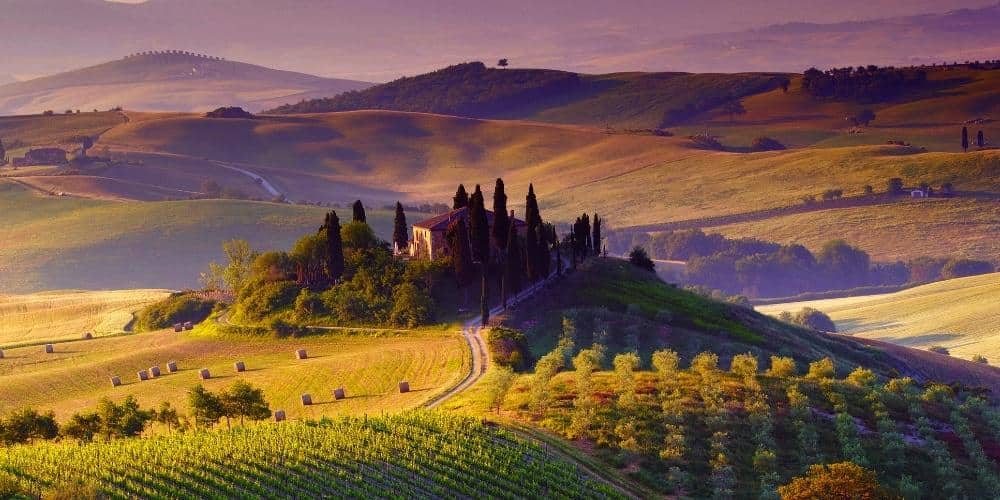
The Val d'Orcia is "photogenic", so get your cameras ready and make sure your smartphones have enough storage available: compulsive shooting is guaranteed. And it couldn't be otherwise: it is no coincidence that these places have inspired - and continue to do so - unforgettable masterpieces of art, from painting to cinema. The wide valley crossed by the Orcia river is a succession of wheat fields, vineyards, olive groves, cypresses, chestnut and beech woods that paint the hills in breathtaking shades, from spring greens to autumn reds.
Our advice for enjoying the Val d'Orcia to the fullest is to give yourselves some days to explore the area: this is one of those places that demand more than a quick visit. If you don't have much time, it is best to get straight to the point: prepare an itinerary covering the small, delightful villages that dot the area and don't disdain the hamlets, chapels and the many castles that punctuate the landscape.
The main actors on this spectacular stage are the cypresses. The relationship between these plants and Tuscany is rooted in history. Beloved by the Etruscans, immortalised in iconic canvases by Renaissance artists, they are now typical elements of the Tuscan countryside, where they mark out roads, properties and farms.
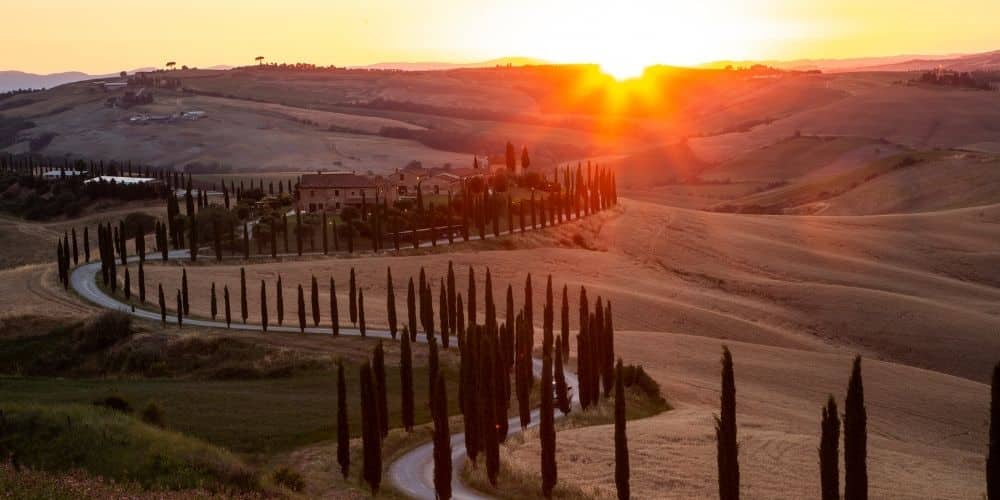
Among the most distinctive and well-known, we cannot avoid mentioning the super-famous ensembles near San Quirico d'Orcia (you will probably have seen them on calendars, magnets, postcards and souvenirs of various kinds from Tuscany). Find them on a site called "Triboli", a name that recalls the viaduct on the Cassia where you can admire these two striking groups of plants included in the list of Monumental Trees of Italy for their high scenic value. The first cluster consists of a rhomboid-shaped grove, a sort of natural amphitheatre. Perhaps, originally hunters used to exploit it as a "roccolo" to attract birds. The second group represents two distinct semicircles open towards the centre of a dirt road.
A short distance, you will find another evocative place of the Val d'Orcia, equally popular and surrounded, needless to say, by the ever-present cypresses: the Chapel of the Madonna di Vitaleta. You can reach the sacred building from the Via Cassia, walking a long and scenic path. It's a proven property, but it is worth stopping to admire the structure from the outside and the surrounding panorama.
Villages
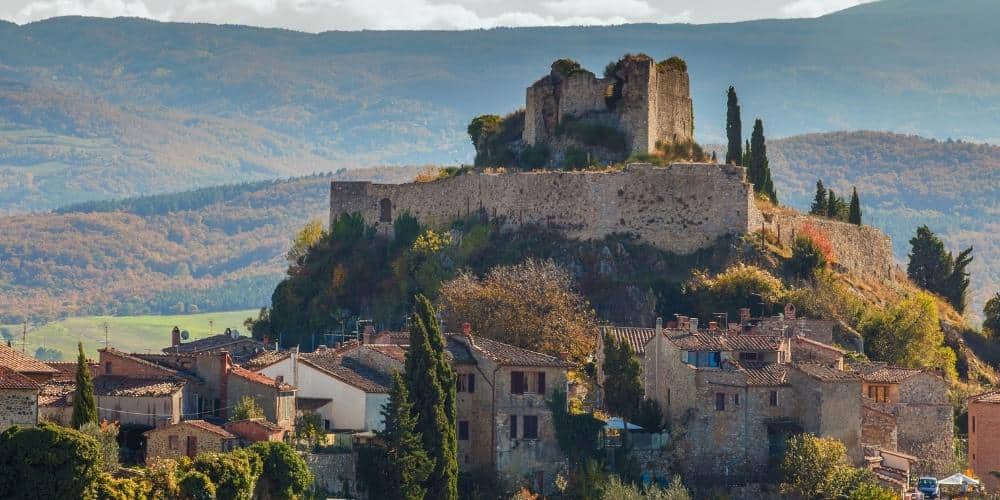
There is plenty of villages to visit in the Val d’Orcia, and they are all worth a visit. The more trained can consider walking along the stretch of the Via Francigena that crosses the valley, retracing the footsteps of Archbishop Sigerico on his way to Canterbury in 990 AD.
Here are some ideas for your journey. The charming town of Radicofani stands on a hilltop from which its imposing fortress overlooks the panorama for miles around. Lose yourself in the narrow streets and stone buildings of this Orange Flag town and feel a bit like Ghino di Tacco, the Robin Hood of the Val d'Orcia, whose hideout was Radicofani. Not far away, the Bosco Isabella is a romantic and mysterious 19th-century English garden. In the park, you will find paths, ponds, sculptures, ancient Etruscan ruins and a pyramid, too.
Continue with a stop in Castiglione d'Orcia, with its imposing Rocca di Tentennano, which hosted Saint Catherine of Siena and Lorenzo the Magnificent and played an important strategic role for the ancient Sienese state.
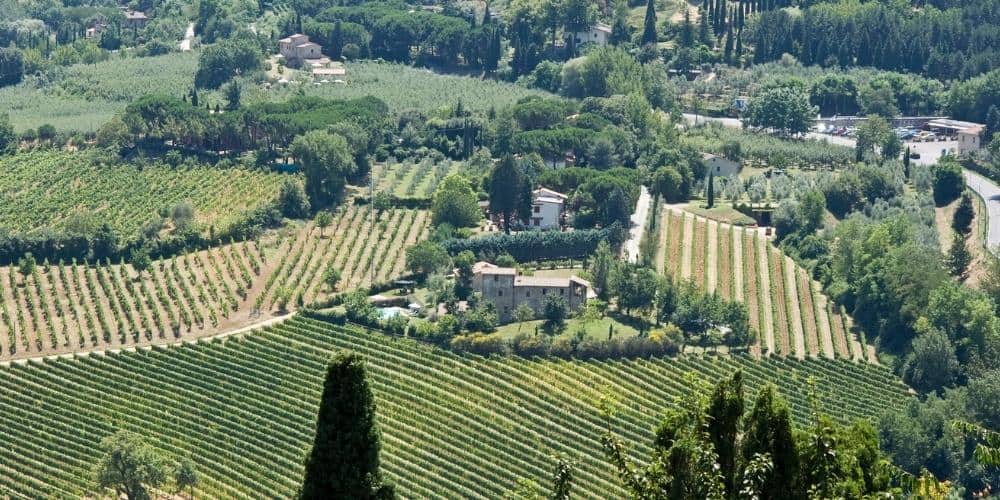
Reach Bagno Vignoni, an original spa town characterised by the so-called "vascone", the huge pool of thermal water in the historic centre. Continue your itinerary to San Quirico, a tiny hamlet enclosed by 14 towers, and visit its Horti Leonini, a well-kept 16th-century Italian garden. A true jewel of Renaissance urbanism, the “ideal city” designed by Pope Pius II, the harmonious Pienza preserves architectural masterpieces such as the Duomo, the Palazzo Comunale and the panoramic Palazzo Piccolomini.
Bordering the Valdichiana, Montepulciano has an ancient history highlighted thanks to the perfect blend of medieval and Renaissance architecture in its historic centre. Not far away, you can reach the astonishing Church of the Madonna di San Biagio. Taking it in with the imposing profile of Montepulciano looming from behind is a scene that will fill your eyes with wonder.
Montalcino, the Brunello village nestled in the hills of the Val d'Orcia and home to one of the world's most famous wines, is a wonderful place to visit in summer and autumn when festivals and events are celebrating the fantastic local products. The 16th-century borgo is perfectly preserved and boasts a 1361 fortress from which to enjoy the magnificent view of the Crete Senesi.
Beef up your stay dropping in on Contignano, Monticchiello, Rocca d'Orcia, Campiglia d'Orcia, Bagni San Filippo, Lucignano d'Asso, Vivo d'Orcia and Sarteano, enchanting places that will enrich your holiday with suggestions and atmospheres of other times.
Typical products
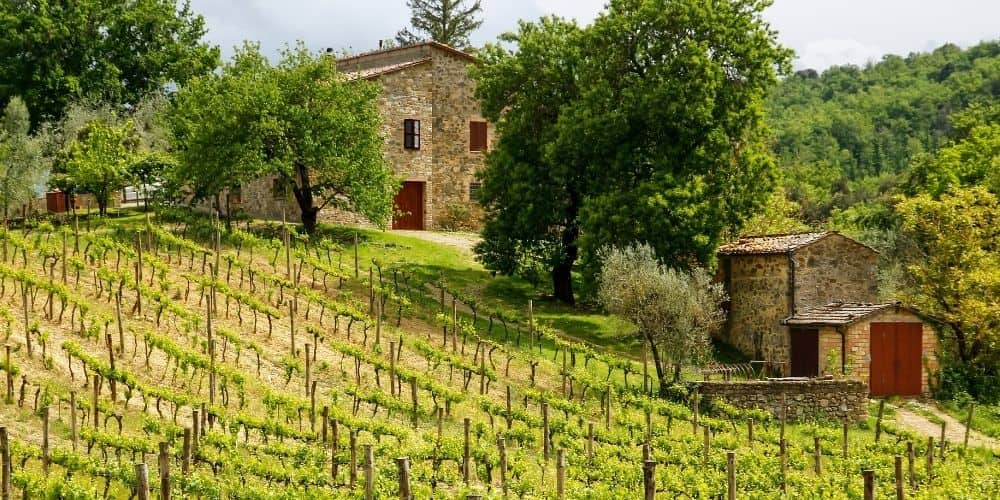
As we have seen, the Val d'Orcia is teeming with villages and hamlets full of charm and with a story to tell. The best thing is to plan your tour in such a way as not to miss any of them and enjoy the excellent cuisine and wines that are the other characteristic feature of this part of Tuscany. Val d'Orcia honey, Castiglione d'Orcia extra-virgin olive oil, Cinta Senese cold cuts, legume soups, truffles, mushrooms, the typical Pici and Panforte are just some of the items you will find on the menus of restaurants and trattorias. Don't try to go on a diet before your holiday: it would be a pity. The culinary aspect of this territory is a fundamental part of the trip to Val d’Orcia and a chance to uncover its culture and lifestyle.
Here you can sip three of the region's greatest wines: Nobile di Montepulciano, Brunello di Montalcino and Orcia DOC. A great idea is to take part in some organised tours to discover the vineyards and cellars, with tastings and obligatory stops in wine shops. Enthusiasts may consider making a base at a wine estate. Among the area's typical culinary products, the Pecorino di Pienza stands out as local excellence. There are several types: try them all, it will be a feast for the palate.
About the author
Written on 11/11/2021


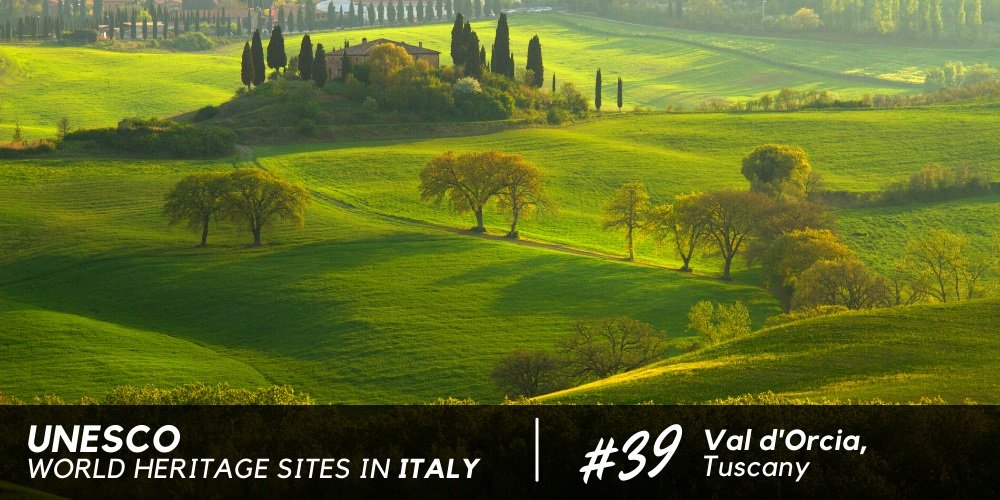
Lorena Calise
A UNESCO World Heritage Site since 2004, the Val d'Orcia is a symbol of Italy throughout the world. What is so fascinating about this destination?